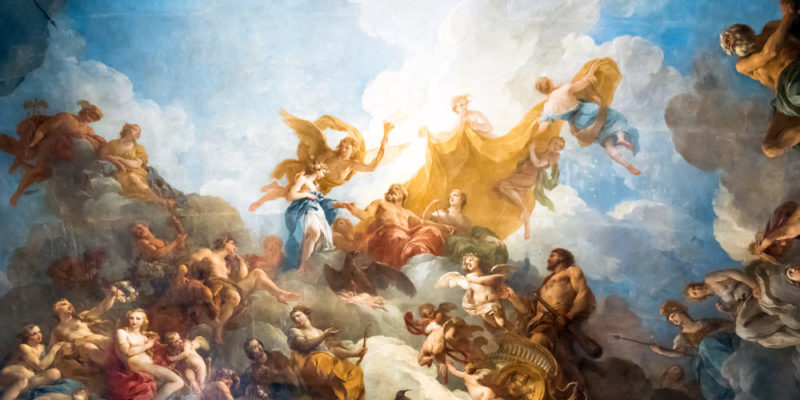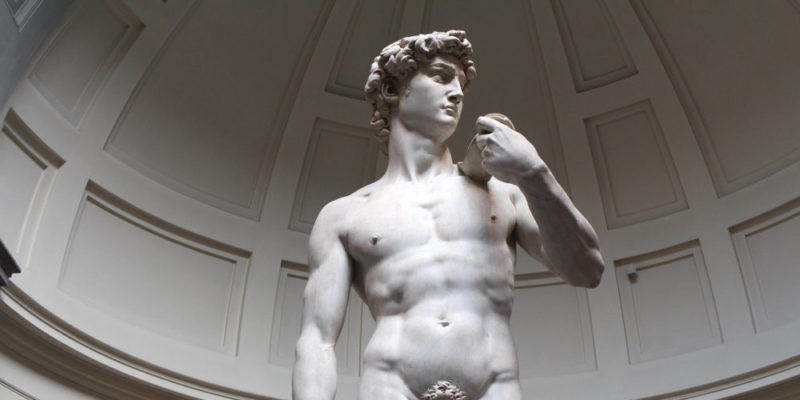We explain what classicism was, its origin and characteristics. In addition, its main representatives and more.
What is classicism?
Classicism is an artistic and cultural movement that had its heyday between 1750 and 1820 , influenced by the aesthetic and philosophical values of Roman and Greek antiquity, hence the origin of its name that alludes to classical art. In addition, it showed perfectionist tendencies in the representation of the human figure.
Classicism took place between the Baroque and Romantic movements , during the second half of the 18th century in which a series of historical events took place that drastically changed the social paradigm, such as the French Revolution of 1789 and the beginning of a new era: the Contemporary Age .
Origin of classicism
At the end of the Middle Ages , in the 15th century, a slow transformation of cultural values began that manifested itself until the 17th century. It was first produced in Italy and then spread throughout Europe , largely due to the discovery of the printing press in 1440, which made it possible to go from manuscripts to printed texts, both literary and popular.
The transformation consisted of a resurgence of classical ideals that were taken as aesthetic and philosophical models , the anthropocentric influences of the humanism intellectual movement, and in which the prevailing religious doctrine was left aside to prioritize the stories and characters of Greek mythology .
At first, classicist ideals predominated in Protestant countries and in France, which was mostly Catholic. As they became more widespread, they managed to put aside the elaborate style of the baroque movement that predominated in Europe, especially in Catholic countries, such as Spain and Italy , and achieved notoriety and recognition as an artistic movement.
Characteristics of classicism

Classicism was a movement that represented historical and mythological events in a sober, rational and non-exaggerating way , which stood out for its perfection in representations. In painting and sculpture he suppressed all imaginary ideas and the main axis was to highlight the harmony of the human body. The writing was characterized by its pedagogical quality through the narration of historical events and important characters.
In the plays, the tragic or heroic themes of Greco-Roman antiquity were recreated , based on sacred rituals and the relationship with the deities. Writers of tragedy have stood out , such as Juan Racine or Pierre Corneille, and of comedy, such as Moliere.
Music of Classicism

Classicist musical works were characterized by:
- A refined style, with harmonious melodies that respected a balanced and orderly structure, generally four or eight bars long. The musical rhythm turned out to be softer than that of the baroque style.
- Opera buffa emerged, combining music and theater with arguments referring to issues of everyday life, of a rather comic and tragic nature.
- The orchestra was formed as a characteristic of the classical musical style. It consisted of a group made up of a section of strings (violins, violas, cellos and double basses), winds (flutes, oboes, clarinets, bassoons, horns), percussion (timpani, cymbals) and an orchestra conductor.
Classical painting and sculpture

Both classicist painting and sculpture were characterized by their harmonious, balanced representations that respected the sense of proportion, dealing, in particular, with historical events and mythological scenes. The harmony and idealized forms of the human body , as the Greeks and Romans had shaped it, was the main axis in classicist art.
The classicist aesthetic was similar to that of the baroque painting that preceded it, but they differed in what they represented. Baroque art prioritized the emotional over reason in order to shock the observer, on the other hand, classicist art sought to break with the sensual and exaggerated ideology, to better represent reality and highlight mythological concepts over the Catholic religion.
Classicism literature
The literature of classicism was characterized by maintaining the literary principles and norms of Greco-Roman authors, mostly playwrights and poets, such as Aristotle .
The classicist authors wrote about what was worthy and true, as opposed to the baroque literary style that was exaggerated and unreal.
The work of Nicolás Boileau was highlighted, which evidenced criticism of contemporary literary and his admiration for Molière, Jean de La Fontaine and Jean Racine.
Classicism architecture
Classicist architecture was characterized by a greater balance, both in the proportions between the base and the height and in the ornamentation, as opposed to the Gothic or Baroque style. Some examples of classical architecture are:
- The Puerta de Alcalá, in Madrid (1778).
- The Prado National Museum, in Madrid (1819).
- The Brandenburg Gate in Berlin (1788).
- The Bourbon Palace, in Paris (1722).
- The Cathedral of Our Lady of Kazan, in Russia (1801).
Representatives of classicism
Among the main representatives of classicism stand out:
- Nicholas Poussin (1594-1665). French painter considered the founder and one of the most prominent artists of the classicist movement.
- Jacques Stella (1596-1657). French painter whose work was characterized by the elegance of his sculptural figures and the use of sober tones.
- Claudius of Lorraine (1600 – 1682). French painter who began his work during the Baroque movement and then devoted himself to the classicist style, standing out for his landscapes.
- Allan Ramsay (1713-1784). Scottish painter who was noted for his realistic works, especially portraits.
- Gaspard Dughett (1615-1675). Italian painter noted for his landscape works, especially the cultivated fields of Rome.
- Pierre Corneille (1606-1684). French playwright considered one of the greatest exponents of classical literature, especially the dramatic genre.
- Jean Baptiste Poquelin or Molière (1622 – 1673). French playwright, actor and poet considered one of the best writers of universal literature.
- Jean de La Fontaine (1621-1695). French fabulist who was noted for his short stories and novels . His work, made up of twelve books of fables , is considered a model of that genre.
- Jean Racine (1639-1699). French playwright considered one of the best classical theater writers of genres such as tragedy and comedy.
- Bertel Thorvaldsen (1770-1844). Danish sculptor who was noted for his sculptures on marble and reliefs made in churches, tombs and temples.
- Wolfgang Amadeus Mozart (1756-1791). Austrian composer, pianist, violinist and conductor considered one of the most influential and geniuses in the history of classical music.
- Ludwig van Beethoven (1770-1827). German composer and pianist recognized for his works and for becoming the director of important orchestras, despite his health problems.
Cultural journalist with great interest in education and technological innovation in the classroom. The future passes through technology and it is already here. .
Leave a reply
Your email address will not be published. Required fields are marked *Recent post

Sport: What Is It, Types, Risks, Features, Characteristics and Examples

Dogs: Emergence, Features, Characteristics, Feeding and Breeds

Story: Definition, Elements, Structure, Features and Characteristics

